
What Are Metatarsal Pads?
Metatarsal pads are small, unobtrusive pads that sit on your shoe's insole or footbed and are positioned behind the ball of your foot, in the pocket of space that exists just behind your metatarsal heads.
Do Metatarsal Pads Work?
Metatarsal pads are one of the unsung heroes of natural foot health, and they represent a noninvasive and economical way to address a wide range of common foot and toe problems. Unlike conventional arch orthotics, which attempt to control the motion of your foot, metatarsal pads allow your foot to function the way nature intended; that is, flexing, bending, and articulating in a way that’s unconstrained by external factors or by forces acting upon it. Metatarsal pads work with your foot instead of trying to control it.
To understand why (and how) metatarsal pads are beneficial, it’s important to understand why they are even necessary in the first place.
The Effects of Conventional Footwear

If it weren’t for conventional footwear, with its heel elevation, toe spring, toe taper, and other injurious design elements, it’s likely that most people would not need to use metatarsal pads to rehabilitate their feet and restore optimal foot health. After all, individuals who have grown up in barefoot cultures do not experience the same kind of foot and toe problems that so commonly affect the shod. But, after many years of weight-bearing activity (e.g., standing, walking, running, etc.) in foot-deforming shoes, boots, sandals, and other footwear, most feet take on the shape of these constrictive foot coverings, with negative implications on the structure and function of the foot and toes. Unfortunately, most shoes that are touted as “wide” or “accommodating” are not sufficiently wide where you need the width the most: At the ends of your toes.
So, it’s conventional footwear—including casual, dress, and athletic footwear—that’s the underlying cause of most foot and toe problems and the main reason why metatarsal pads are required for most people (even for those who aren’t yet experiencing foot pain or problems). Indeed, almost everybody who has worn conventional footwear for prolonged periods can benefit in some way from adopting metatarsal pads.
SHOP METATARSAL PADS
The Five Most Important Metatarsal Pad Benefits

Metatarsal pads offer you five distinct advantages or benefits. When properly placed (more on this topic below) within a completely flat shoe with a sufficiently wide toe box, metatarsal pads help:
- Enhance foot comfort
- Spread your metatarsal heads
- Straighten and realign crooked toes
- Restore optimal forefoot fat pad positioning
- Address and prevent common foot & toe problems
We’ll elaborate on each of these important potential benefits here.
1. Enhance Foot Comfort

For many people, the act of wearing shoes is a painful one. Many regard this experience as inevitable, but we here at Natural Footgear are here to say that it does not have to be this way. First of all, foot-shaped and foot-healthy footwear is now available to consumers. All the men's and women's footwear we feature on the Natural Footgear site gives your foot (including your toes) the room it needs to operate without feeling pinched or constricted.
Second, the simple act of adding a metatarsal pad to your shoe can (at the very least) significantly enhance your foot comfort. It does this by helping your foot make the most of its own built-in cushioning (more on this below in the section entitled Restore Optimal Forefoot Fat Pad Positioning). Metatarsal pads also ensure that your body weight is distributed evenly across the many points of your foot that are already designed or intended to bear weight, including all your metatarsal heads and toe bones. For some people, these metatarsal pad-related changes in the foot can make all the difference between a miserable footwear experience and a comfortable footwear experience.
SHOP METATARSAL PADS
2. Spread Your Metatarsal Heads

The narrow toe boxes included in almost all conventional footwear are a major problem when it comes to the heads of your metatarsal bones—the bony prominences at the base of your toes that are also known as “toe knuckles.” Indeed, tapering toe boxes squeeze your toes and your metatarsal heads together. This is a problem because there are a number of sensitive structures that course between your metatarsal heads on their way to and from your toes, including nerves and blood vessels. Over time, too-narrow footwear squeezes your metatarsal heads closer together, which impinges the nerves and blood vessels, causing pain and problems.
Metatarsal pads, when used in conjunction with foot-shaped footwear, help separate or spread apart your metatarsal heads, creating more space for your interdigital nerves and blood vessels to pass. It’s the curved nature of the metatarsal pad's prominence (and where this raised part of the pad sits beneath your foot) that causes the beneficial splaying of your metatarsal heads. This is a natural, noninvasive way to combat the injurious forces of too-narrow footwear on your sensitive ball of foot structures.
3. Straighten & Realign Crooked Toes

Most people who wear—or who have worn—conventional footwear for any significant duration have at least one type of crooked toe. Indeed, crooked toes are caused by inappropriate footwear; that is, by footwear that possesses heel elevation, rigid soles, tapering toe boxes, and toe spring. Conventional footwear forces your toes into an unnatural configuration and encourages muscle and tendon imbalances in your foot and lower leg that result in crooked toes. Possible crooked toe problems include hammertoe, claw toe, mallet toe, adductovarus toe, overlapping toe, and curly toe.
If you use conventional footwear, you will most likely end up with toes that are chronically overextended (i.e., pointed upward) and tapered toward your foot’s midline. The muscles and tendons under your foot, your toe flexors, will become stretched and weak, while your toe extensors, the muscles and tendons on top of your foot, will become overly tight and strong. One of the great benefits of metatarsal pads is that they promote the return of overextended toes to their normal anatomical position.
In other words, by pressing upward into the sole of your foot just behind the ball of your foot, they cause a compensatory downward shifting of your toes so that your toes fully contact the ground. Over time, and with the consistent use of metatarsal pads and other helpful footgear, you can work out your crooked toe problem and achieve straighter, more naturally-aligned toes that fully participate in the act of weight bearing—something your toes are designed to do, and must do, in order for your foot to function optimally.
SHOP METATARSAL PADS
4. Restore Optimal Forefoot Fat Pad Positioning

The forefoot fat pad, sometimes called the “pedal” fat pad, is a thick (~1-2 cm) layer of closely-packed fat cells surrounded by fibrous tissue that, under ideal conditions, is situated on the sole of your foot, beneath the ball of your foot. It is tasked with protecting sensitive ball of foot structures and tissues, including nerves, blood vessels, tendons, ligaments, and bone, and it does this by providing natural cushioning to minimize impact, pressure, friction, and shear forces on your foot. Your forefoot fat pad helps you comfortably perform a wide range of weight-bearing activities, such as walking, running, or even standing still.
If your toe extensor muscles and tendons are chronically tight, it’s most likely that your overextended toes have dragged your forefoot fat pad out of position; that is, up and away from the ball of your foot, further out toward the end of your foot. With no or relatively little padding left in place, the ball of foot structures and tissues mentioned above are left vulnerable to the forces of body weight, which can lead to a host of problems, including, but not limited to, neuromas, sesamoiditis, capsulitis, and plantar fasciosis.
Metatarsal pads are helpful, then, because they encourage the return of your forefoot fat pad to a place that supports your metatarsal heads. They do this through the same mechanism that leads to flatter and straighter toes; that is, by gently pushing upward into the space behind the ball of your foot, which causes a compensatory downward movement of your toes, and with them, your forefoot fat pad. With your fat pad now restored to its originally intended position, you have a natural, built-in cushioning mechanism to protect yourself from ball of foot pain and problems.
5. Address & Prevent Common Foot & Toe Problems

You can use metatarsal pads to prevent or address numerous ball of foot (and other foot) problems and to restore normal and natural foot anatomy and function. As mentioned above, four of the most common foot problems that metatarsal pads can be helpful for include:
-
Neuromas: A neuroma is an often painful enlargement of one of the body’s nerves, and neuromas frequently occur in the foot, between the metatarsals—the long bones of the foot. This is a ball of foot problem that can often be helped by metatarsal pads, which help spread out the heads of the metatarsal bones and bring the toes back down toward the ground, thereby reducing or eliminating the pinch and stretch forces on the nerves that are responsible for irritating this tissue and causing neuromas in the first place.
-
Morton's Neuromas: Morton’s neuromas are neuromas that develop specifically between the third and fourth metatarsal bones. If a neuroma develops between any of the other metatarsal bones, it is called an interdigital neuroma. Metatarsal foot pads can benefit sufferers of Morton’s neuromas in the same way as those suffering from other interdigital neuromas, as discussed above.
-
Sesamoiditis: Sesamoiditis is pain associated with the irritation or fracture of two small bones called sesamoids located on the underside of the big toe. This is a forefoot problem that can, in most cases, be helped with the use of metatarsal pads. Adding a metatarsal pad inside the shoe helps return the forefoot fat pad to a position that cushions and protects the sesamoids and prevents sesamoid bone irritation. Additionally, Correct Toes toe spacers can be used to realign the big toe and guide the sesamoids back to their rightful location, which is immensely helpful in addressing sesamoiditis.
-
Capsulitis: Capsulitis is the inflammation of a joint capsule, and it occurs quite frequently in those who wear conventional footwear. This is due to the shifting of the forefoot fat pad away from the metatarsophalangeal joints—the joints that connect the toe bones to their corresponding metatarsal bones. Metatarsal pads help address capsulitis because they promote the favorable repositioning of the forefoot fat pad beneath the foot's sensitive metatarsophalangeal joints.
-
Plantar Fasciosis: Plantar fasciosis is characterized by heel pain, typically due to compromised blood flow to and from the foot's plantar fascia and a corresponding buildup of metabolic byproducts. When used in combination with other natural footgear (e.g., Correct Toes, Injinji toe socks, and men’s or women’s foot-healthy shoes), metatarsal pads can help restore optimal foot and toe blood flow and address the pain associated with plantar fasciosis.
Note: Metatarsal pads alone can be very helpful in addressing or preventing the problems mentioned above, but all of these foot issues may also benefit from the use of additional helpful footgear. This footgear combination, which we discuss in greater detail below in the section entitled Other Complementary Natural Footgear, typically produces a synergistic effect that leads to speedier healing and even greater foot and toe comfort (for most people, most of the time).
SHOP METATARSAL PADS
Metatarsal Pads for Runners

The benefits of metatarsal pads explained above are also relevant to runners or those who take part in athletic activity. Metatarsal pads for running shoes are no different in form or function than metatarsal pads designed for other footwear, but they perform even greater feats of rehabilitation in athletes due to the increased force being applied through the foot's joints and tissues. Indeed, one of the quickest and most effective ways to restore optimal foot structure and realign the toes is to use metatarsal pads in combination with other helpful footgear during weight-bearing athletic activity.
Orthotics with Metatarsal Pads

It’s important to note that metatarsal pads are not arch orthotics and function in a completely different way from these commonly-prescribed inserts that seek to limit your foot range of motion. There are several key differences between metatarsal pads and conventional arch orthotics, including the following:
- Arch orthotics are typically rigid and inflexible, whereas metatarsal pads are soft and pliable.
- Arch orthotics tend to be rather uncomfortable, whereas metatarsal pads typically feel good and usually offer users some immediate relief from ball of foot pain.
- Arch orthotics are positioned directly beneath your main foot arch and seek to (needlessly) “prop up” or “support” your foot, whereas metatarsal pads sit, unobtrusively, behind the ball of your foot and help restore normal and natural foot form and function.
- Arch orthotics are designed in such a way that your feet become increasingly reliant upon them (for the rest of your life), whereas metatarsal pads are designed in such a way that your feet ultimately become self-reliant. Thus, arch orthotics become more essential over time, whereas metatarsal pads become less essential over time.
Some people wonder if it's possible or helpful to use their conventional arch orthotics in combination with metatarsal pads. In our experience, we have not found this to be beneficial, as it results in crowding in the area beneath the sole of the foot and tends to be rather uncomfortable for users. Additionally, and perhaps most importantly, adopting foot-healthy footgear, such as metatarsal pads and Correct Toes toe spacers, often makes arch orthotics unnecessary.
For more information about conventional arch orthotics (and why they fail to address the root cause of foot and toe problems), please see our article entitled Who Should Use Orthotics?
Proper Metatarsal Pad Placement

Proper metatarsal pad placement is crucial for realizing the full benefit of the pad. Please see this short video tutorial that demonstrates how to properly place your metatarsal pads. Our article entitled Metatarsal Pad Placement is another excellent resource for dialing in the optimal location for your metatarsal pads within your shoes. Improper placement of metatarsal pads can be uncomfortable and could possibly worsen foot conditions in some cases, so, again, getting the placement of your metatarsal pads correct is vital. If you’re not confident in your ability to properly place your metatarsal pads, we recommend scheduling a visit with a foot care expert in your area who has familiarity with the pads and how to place them (this would include most podiatrists, chiropractors, physical therapists, naturopaths, and acupuncturists).
The Two Main Types of Metatarsal Pad

There are two main types of metatarsal pad available to consumers:
-
Mobile: The pads can be worn on your feet inside footwear
-
Stationary: The pads are permanently placed inside your shoes
Both kinds of metatarsal pad work great in alleviating ball of foot pain, addressing crooked toe problems, and rehabilitating your foot. Which one you choose mostly comes down to a matter of personal preference. Let's take a closer look at these two distinct types of metatarsal pad to learn more about the differences between them.
1. Wearable Metatarsal Pads: A “Mobile” Option

Wearable metatarsal pads, such as Strutz Pro foot pads, incorporate a wide elastic band that wraps around your foot and a raised pad that tucks up into the sole of your foot. You can wear these pads on your bare feet, over Injinji toe socks, or within men's or women's foot-healthy footwear. Adjusting the location of these pads is simple: Just slide the band up or down your foot until you achieve the perfect positioning. Wearable metatarsal pads come in just one size, which works well for most people, though if you want or need more nuanced sizing, Pedag metatarsal pads may be a better option for you, as they come in several distinct sizes. An upside of wearable metatarsal pads is that one pair is all you need, since you can use them in different sets of footwear or on your bare feet. Learn more about wearable metatarsal pads in this instructional guide.
SHOP STRUTZ PRO FOOT PADS
2. Pedag Metatarsal Pads: A “Set It & Forget It” Metatarsal Pad

Pedag metatarsal pads are an example of “stationary” metatarsal pads. These pads come with an adhesive backing and are permanently affixed on the liner or insole of your shoe—or, as in the case of sandals or shoes that do not possess an insole, directly on or inside the shoe. This is the more conventional style of metatarsal pad and the one most commonly used in doctors' offices to address the ball of foot and crooked toe problems discussed in this article.
Pedag metatarsal pads come in several distinct sizes and can be easily applied inside footwear using the protocol described (and linked to) in the section above. One pair of Pedag metatarsal pads is required per pair of shoes (i.e., the pads are not interchangeable between different pairs of footwear). Pedag metatarsal pads do not possess a visible band that encircles the foot (like wearable metatarsal pads do), and so those who wear sandals, ballet-style shoes, or other open-upper shoes may prefer using Pedag metatarsal pads over wearable metatarsal pads for this reason.
SHOP PEDAG METATARSAL PADS
Other Complementary Natural Footgear

Metatarsal pads are, by themselves, a great and useful tool for restoring optimal foot health, but they work even better for rehabilitating your feet and addressing or preventing common foot problems when you use them in combination with other natural footgear. Indeed, combining Pedag metatarsal pads with Correct Toes toe spacers, Injinji toe socks, Naboso insoles, and men's or women's foot-shaped footwear is a potent way to build a strong, healthy, and resilient foot that looks and functions how nature intended. If you're looking to achieve optimal foot health through preventative and conservative means, consider adopting this unique combination of footgear for its powerful synergistic effects.
As with Correct Toes, it’s important to use metatarsal pads in shoes that are completely flat from heel to toe (i.e., shoes that have no heel elevation, no toe spring, and no padding under your arch) and are widest at the ends of your toes (i.e., shoes that have no toe box taper). This is the optimal environment in which to place your metatarsal pads, and you will get the most out of your pads by conforming to these helpful and important guidelines.
SHOP CORRECT TOES SHOP INJINJI TOE SOCKS SHOP MEN'S FOOTWEAR SHOP WOMEN'S FOOTWEAR
Do you have any questions about the benefits of metatarsal pads? Join the discussion below this article.
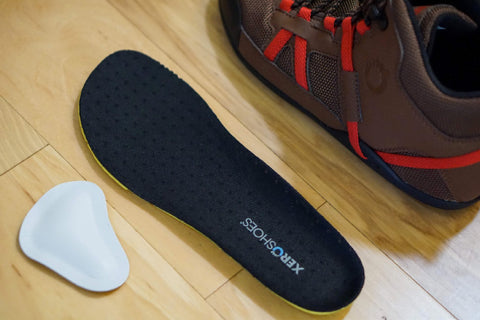 Pedag “T-form” metatarsal pads are among the most helpful (and least obtrusive) foot pads you can use to rehabilitate your feet. These pads are helpful in restoring optimal foot health because they spread the heads of your metatarsal bones (which creates more room for sensitive and easily compressed ball of foot structures, such as nerves and blood vessels, to pass), they promote a balance between your toe flexor and extensor...
Read more
Pedag “T-form” metatarsal pads are among the most helpful (and least obtrusive) foot pads you can use to rehabilitate your feet. These pads are helpful in restoring optimal foot health because they spread the heads of your metatarsal bones (which creates more room for sensitive and easily compressed ball of foot structures, such as nerves and blood vessels, to pass), they promote a balance between your toe flexor and extensor...
Read more

















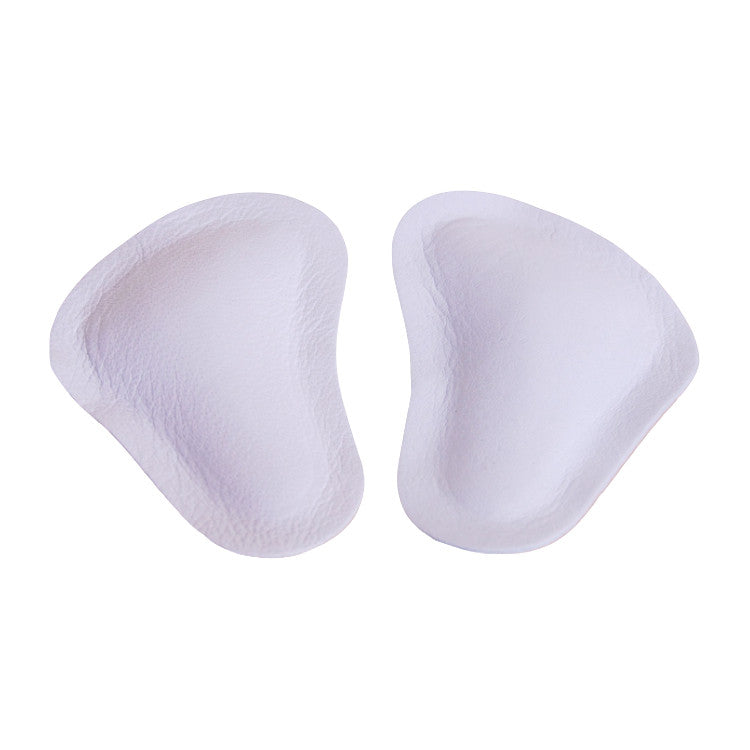
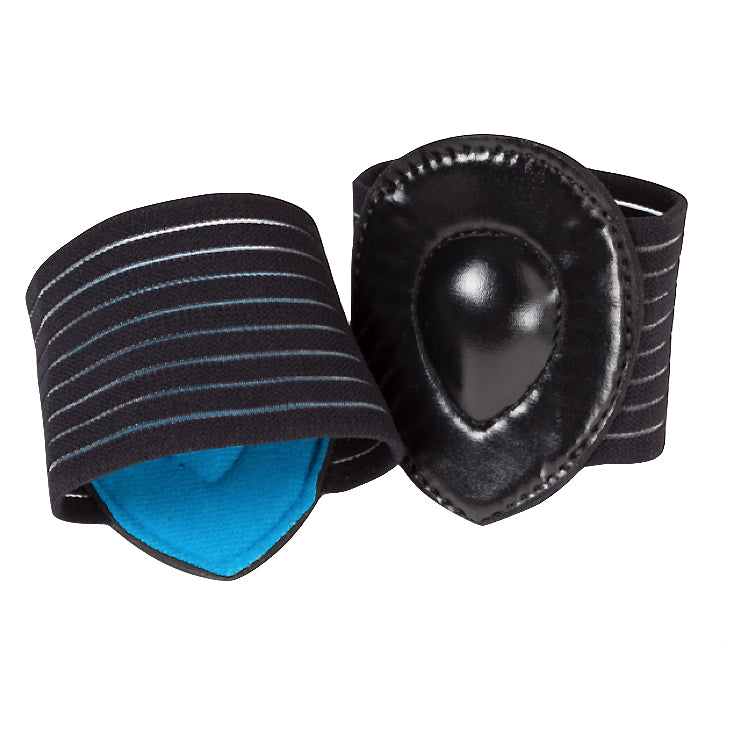
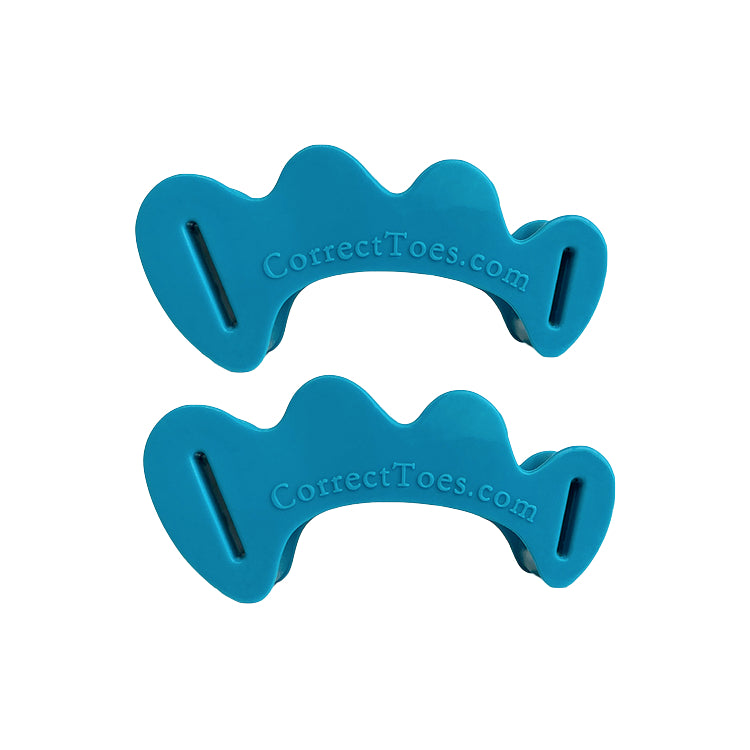
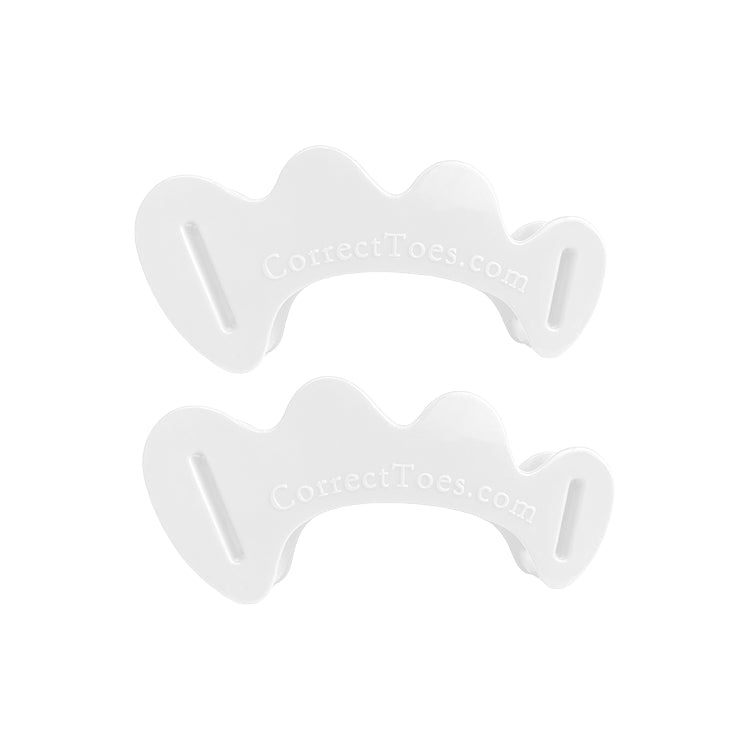

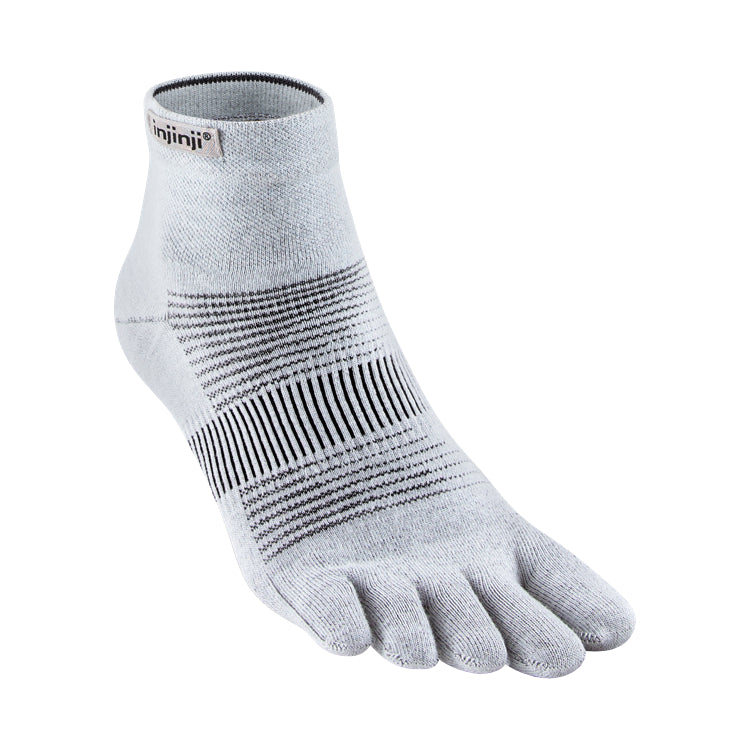
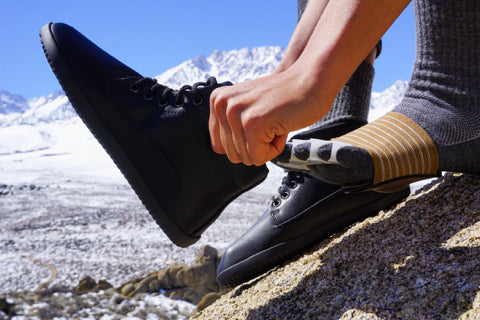
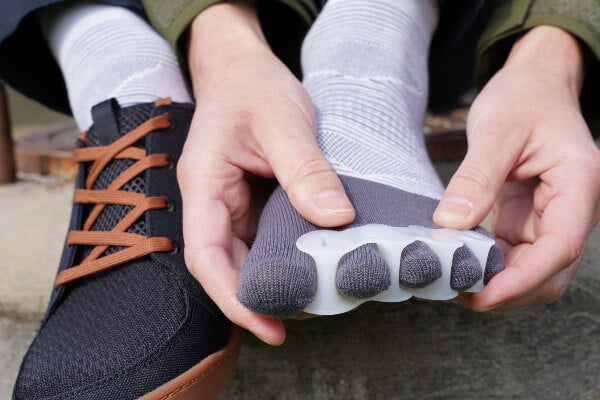

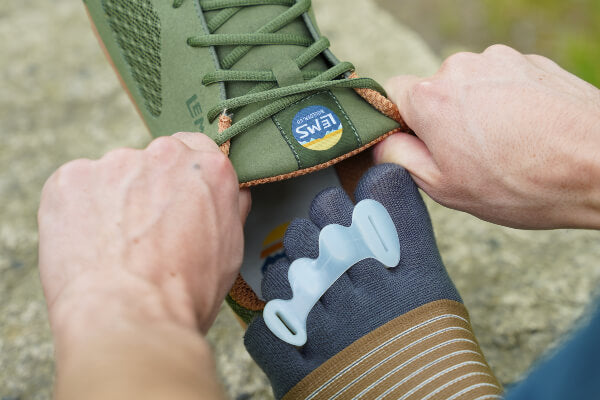
Hi. Do metatarsal pads help with arthritis in the toes?
Hi, Marcie,
Thank you for your question! Indeed, metatarsal pads can be very helpful for people with arthritis of the toes, especially rheumatoid arthritis, which tends to selectively involve the metatarsophalangeal joints of the feet, often causing joint destruction. Other types of toe arthritis can also be helped by metatarsal pads and their ability to take on some of the weight-bearing load in the metatarsal arch, which can help reduce forces on the toes.
I hope you find this info helpful! Please let us know if you have any other questions we can assist with.
All the best,
Marty Hughes, DC
Are metatarsal pads used temporarily to help restore foot function? My podiatrist tells me that my transverse arch has collapsed and that I will need to use met pads for the rest of my life. Is it possible to restore the transverse arch through exercises and then ditch the met pads later on? Thanks.
Hi, Shawn,
Thank you for your questions! Some people do use metatarsal pads temporarily, as a way of getting out of acute ball of foot pain, but in general, we recommend that people simply incorporate the use of metatarsal pads into their daily foot care routine. Indeed, most people can benefit from the long-term use of metatarsal pads to restore optimal foot form and function, as well as for the other reasons mentioned in this article.
In our experience, we’ve found that a combination of Correct Toes toe spacers, foot-healthy footwear, and weight-bearing activity is often effective in restoring the transverse foot arch to its full potential. Of course, every set of feet (and every set of foot circumstances) is different, and what works for one person may not work for someone else. You might consider trying out this footgear combination to see if it’s a good match for you and your particular foot health considerations before committing to one approach or the other.
Please let me know if you have any follow-up questions! I’m happy to help out however I can.
All the best,
Marty Hughes, DC
Thanks for this helpful info! Do you have thoughts on metatarsal pads versus custom orthotics for flat feet? Thanks so much!
Hi, Cheryl. Thank you for your great question! We do indeed have thoughts on this topic. But first, a quick word about flat feet. Flat feet, also known as pes valgus or pes planovalgus, is a health problem in which the foot lacks a normal or discernible arch when weight-bearing. Flat feet may be caused by numerous factors or other health problems, including—but not limited to—tendon injury or illness, neuromuscular conditions (e.g., cerebral palsy), conditions causing extremely flexible soft tissues, and tight Achilles tendons. Advanced age, excessive body weight, traumatic foot or ankle injuries, and rheumatoid arthritis are a few factors that may increase a person’s risk of developing flat feet.
For many people, though, flat feet—a problem that occurs when the tendons binding the foot together become loose—is the result of the prolonged use of conventional footwear, which strips the foot of its inherent power and results in underactivated foot and lower leg muscles. As a result, the foot may lose some or all of its loft, leading to the appearance of a flat foot and a variety of possible resultant musculoskeletal problems. Conventional care for flat feet usually involves an orthotic device (custom or otherwise) to prop up the arch, whereas a natural, conservative approach involves using Correct Toes toe spacers and footwear that’s completely flat from heel to toe, flexible in the sole, and widest at the ends of the toes to allow the foot arch to function optimally (by recruiting the foot’s natural suspension system).
Though metatarsal pads are helpful for improving foot health in a variety of ways, they are often best for addressing ball of foot problems such as capsulitis, sesamoiditis, and neuromas, or for treating toe problems such as hammertoes or other crooked toes. Because of their relatively soft and compressible nature, they will not rigidly hold the arch aloft, which, in our opinion and experience, is not, in the vast majority of cases, helpful or desirable anyhow. This attempt to dictate foot position and function is what conventional arch orthotics seek to do, and we feel that, in most cases, this actually does a major disservice to the foot, keeping it in a weakened and compromised state. All this to say, then, that there is a big difference between metatarsal pads and custom arch orthotics and that, while metatarsal pads can be helpful for a number of reasons, neither the pads alone nor the orthotics are likely to fully resolve or correct flat feet.
We hope this info helps! Should you wish to learn more about the condition of flat feet, we recommend checking out our blog post entitled Flat Feet: Conventional vs. Natural Approaches (www.naturalfootgear.com/blogs/educational-articles/flat-feet-conventional-vs-natural-approaches). And, if you have any follow-up questions about the above, please don’t hesitate to reach out to us by leaving another comment here or by sending us an email via our website’s contact form: www.naturalfootgear.com/pages/contact.
Yours in Foot Health,
Drs. Marty & Robyn Hughes
I have had neuroma surgery and now have painful calluses on the ball of my foot. What is the best solution for getting relief?
Hi, Micki,
Thank you for your question. For painful calluses after neuroma surgery, the best solution often involves gentle exfoliation, softening treatments (like creams with urea or salicylic acid), and wearing shoes that reduce pressure on the ball of your foot. Flat, padded insoles or metatarsal pads can also help redistribute pressure. If the calluses persist or become painful, it might be worth checking in with a foot care professional for further treatment.
All the best,
Marty Hughes, DC
I have hallux valgus and began wearing Correct Toes four weeks ago. I built up to 30 minutes per day and also began wearing the proper shoes. I wear them both about 10-12 hours per day now. My toes are flat, and I’m not in pain. Thanks!
Hi, Lee Ann,
It’s fantastic to hear that you’re seeing progress with Correct Toes and foot-healthy footwear! Four weeks is an excellent start, and it sounds like you’re on a good path to improving your foot health. The fact that you’re pain-free and your toes are now lying flat is a positive sign. Keep listening to your body and continue with the gradual wearing of Correct Toes as your feet adjust. You’re doing great!
All the best,
Marty Hughes, DC
I have had so many foot issues. I’ve also spent thousands of dollars, not knowing what was wrong. I’ve learned that I have high arches, a high instep, and slightly wide feet. I only wear shoes that are designed for these issues, and I have special insoles in each pair. I used to wear heels pretty regularly many years ago, and the balls of my feet would be super sore (debilitatingly so). Arch support insoles have reduced foot pain so much, but I understand that these accommodations are weakening my feet. If I walk barefoot in my house, within 10 minutes my soles are in pain, especially the balls and heels. Will using minimalist shoes and metatarsal pads, toe socks, etc. eventually correct this? Doctors where I live are not knowledgeable enough to recommend minimalist footwear. I’m concerned about the discomfort I may feel without the cushioning.
Hi, Sonia,
Thank you for your comment. It’s clear you’ve been working hard to find the right solution for your feet. Moving from cushioned shoes to minimalist footwear can be challenging, especially after wearing more conventional footwear for many years or decades. Introducing minimalist shoes gradually, along with metatarsal pads, toe socks, and toe spacers, can help strengthen the muscles in your feet and improve their flexibility. You might consider incorporating some foot stretching and strengthening activities into your daily foot care routine as well—whether it be the Toe Extensor Stretch or foot-building exercises with the BlackBoard Basic or Naboso Kinesis Board—to help with your overall foot and toe rehabilitation. Also, you can always revert to more cushioned footwear for a period of time should the need arise.
I hope this info helps! Please let us know if you have any additional questions.
All the best,
Marty Hughes, DC